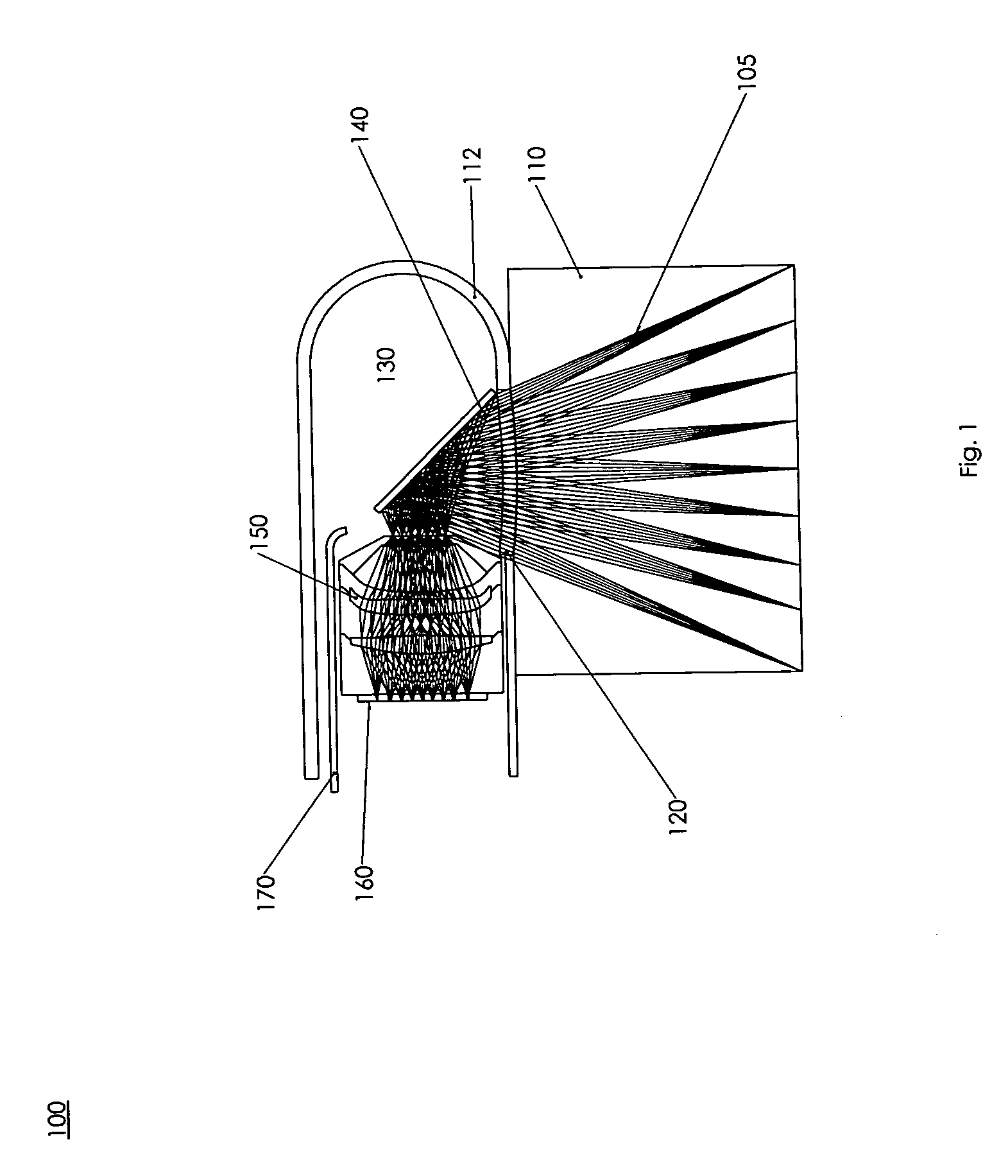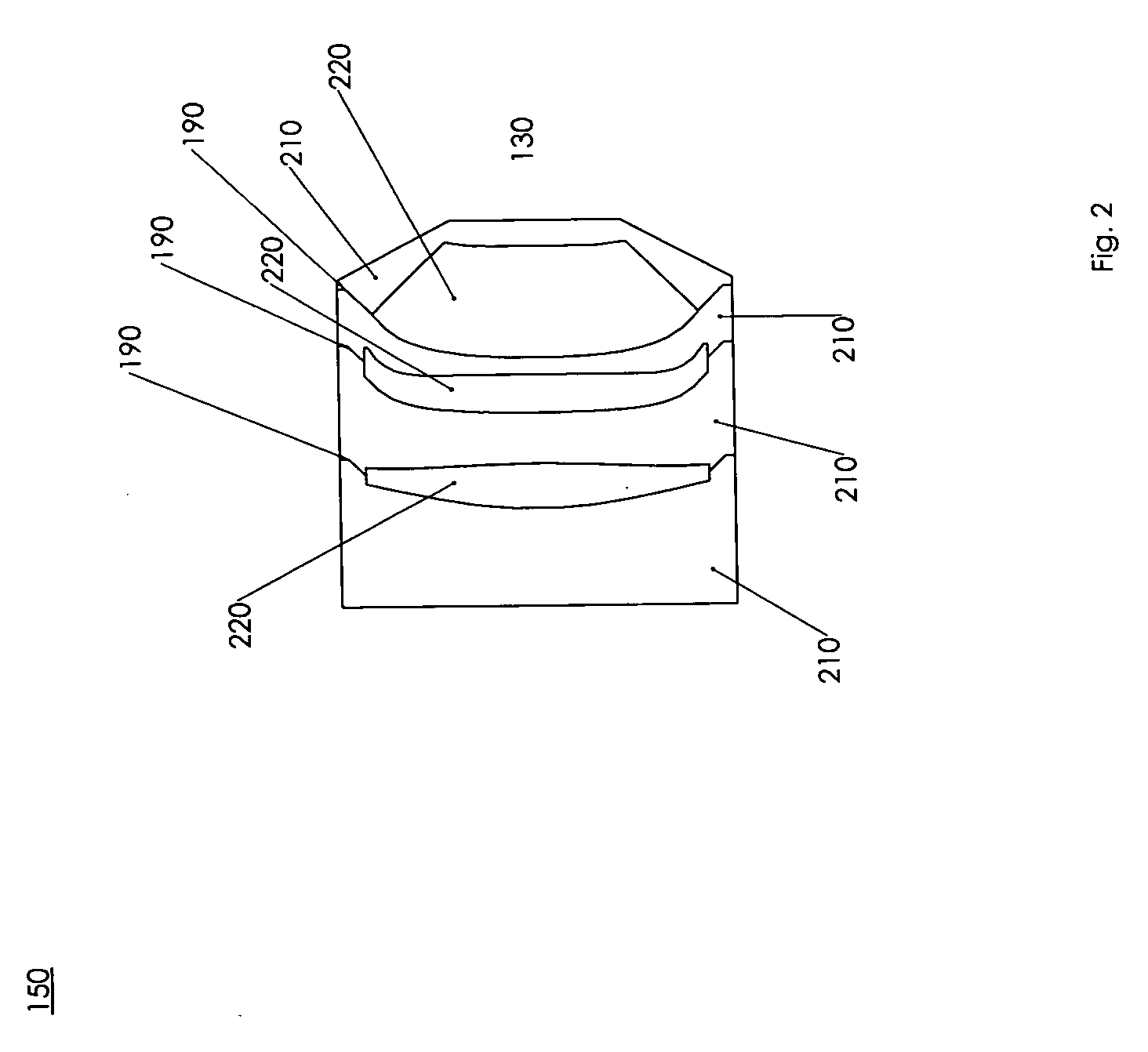Acoustic imaging probe incorporating photoacoustic excitation
a technology of photoacoustic excitation and imaging probe, which is applied in the field of imaging probe incorporating photoacoustic excitation, can solve the problems of complex use and manufacture of systems that use this process, generating erroneous range data, and not readily useful for applications
- Summary
- Abstract
- Description
- Claims
- Application Information
AI Technical Summary
Benefits of technology
Problems solved by technology
Method used
Image
Examples
Embodiment Construction
[0040]In describing the present invention a variety of terms are used in the description. Standard terminology is widely used in the optics and photonic arts. For example, one may refer to Modem Optical Engineering, Warren J. Smith, the disclosure of which is incorporated herein by reference for its general teachings in optical engineering and analogous acoustic engineering.
[0041]An acoustic imaging probe for use in an acoustic imaging system comprising a single cohesive composite acoustic lens, a low acoustic impedence fluid, a housing for said acoustic lens, a window through said housing, and an acoustic imager.
[0042]An acoustic imaging probe for use in an acoustic imaging system comprising a cohesive composite acoustic lens incorporating aspheric geometry and exhibiting low or practically no measurable dispersion of acoustic waves constructed of at least one material with a low acoustic impedance and attenuation and a relatively low acoustic velocity and at least one other materi...
PUM
 Login to View More
Login to View More Abstract
Description
Claims
Application Information
 Login to View More
Login to View More - R&D
- Intellectual Property
- Life Sciences
- Materials
- Tech Scout
- Unparalleled Data Quality
- Higher Quality Content
- 60% Fewer Hallucinations
Browse by: Latest US Patents, China's latest patents, Technical Efficacy Thesaurus, Application Domain, Technology Topic, Popular Technical Reports.
© 2025 PatSnap. All rights reserved.Legal|Privacy policy|Modern Slavery Act Transparency Statement|Sitemap|About US| Contact US: help@patsnap.com



